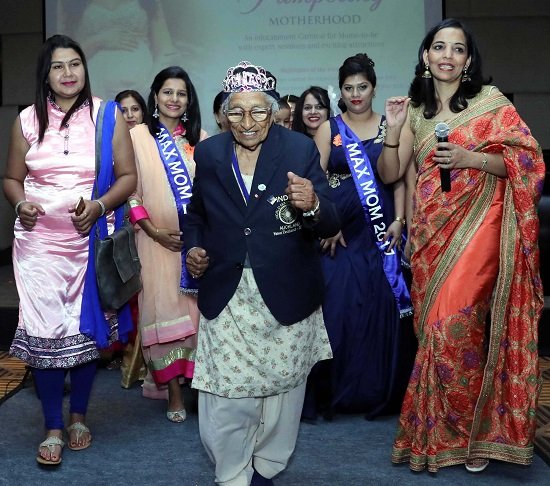
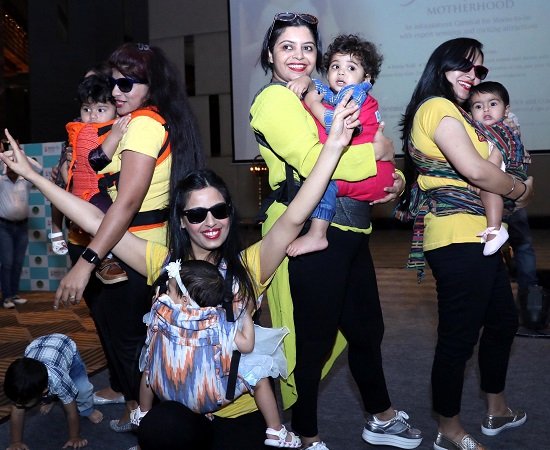
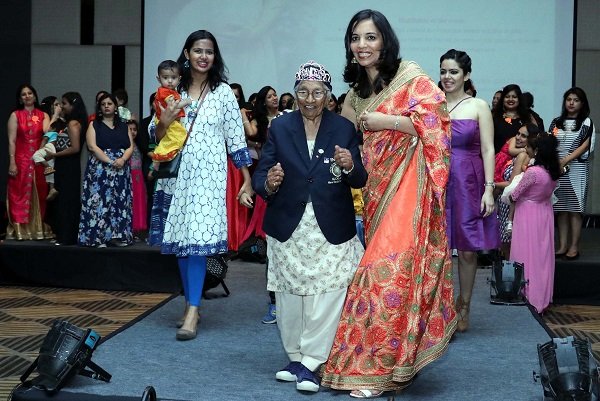

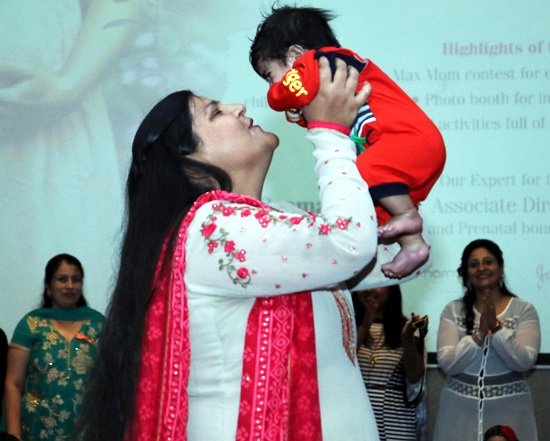





Nothing appears to be going right for the prestigious Panjab University Chandigarh. The last ambers of the raging student protests over the steep fee hike, which was later moderated by the authorities, were yet to die down, when a devastating fire ravaged a major portion of the first floor of the sprawling Administration block on the intervening night of Saturday-Sunday, destroying furniture and records and damaging the building.
It took the PU staff and the fire tenders, which were rushed to the spot, nearly two hours to bring the fire under control, though the fire fighters continued to douse the last flames even after nine hours of the fire being noticed.

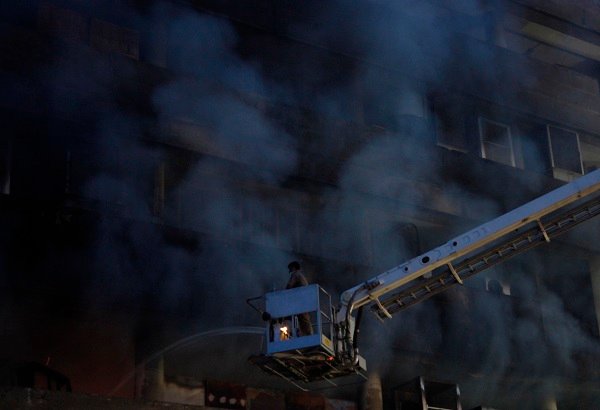
A slew of places in the city now offer food delivery services post midnight with plump menus to choose from
Till a while ago, getting food delivered at your home late at night, actually post 11 pm, was unheard of. A late night could be an outing with friends or arriving home after a super long day at work. If you are in the mood to order in food (think beyond the usual) especially when hunger strikes post midnight, there’s help at hand. A slew of places in the city now offer food delivery services post midnight with plump menus to choose from.
Here are some options:
Food@U

Photo Courtesy: Food@U

Photo Courtesy: Food@U
Their tagline claims ‘good food within minutes’. Housed in Industrial Area, Phase 1, Food@U is open from 11 am to 2.30am and delivers across the city. The menu offers a spread of Continental, North Indian, South Indian and Chinese dishes to choose from. But we hear that Paneer Lababdar, Dal Makhni, Hyderabadi Chicken Biryani and Butter Chicken are top favourites. We also liked their unique salad concoctions that come in a jar. The recipes for the salads have been curated by Chef Alka Kansra. The Millionare Brownie Trifle (the desserts are by Made@Home) is worth trying out and will give new meaning to midnight feasting. A meal for two should cost around Rs 700.
Contact: 08288966669
The Night Factory

Photo Courtesy: The Night Factory
A 24-hour food delivery service, The Night Factory has been able to find itself a dedicated fan base that swears by its quality and service. The menu is packed with options traversing through North Indian, Continental, Chinese and an extensive range of pizzas. The signature kathi rolls come highly recommended and come in more than a simple chicken/paneer option. There’s even a honey chilli chicken kathi roll for those who relish Chin-jabi flavours. If you are counting your calories, then the salads also pack in more than one option. There’s barbecue chicken salad and the must-try classic Greek veg salad. With home deliveries as their mainstay, the menu offers variety in appetisers and main course. And if you want to order easy, choose from the multiple combo options. We really liked their ‘early morning’ breakfast menu, available from 4 am to 11am. You can order in toast and eggs with a choice of sausages or aloo paranthas. Breakfast in bed just got a whole lot easier. A meal for two will cost around Rs 800.
Contact: 9988799887
Sundown Chef

Photo Courtesy: Sundown Chef
This late night delivery operates from 7pm to 3am. The menu packs in quintessential North Indian and Chinese fare with a selection of pasta, burgers and rolls as well. Paneer seems to be the chef’s favourite ingredient and the ‘Jaipuri Paneer’ and ‘Madrasi Paneer’ are listed as chef’s special on the menu. Of course, there’s Butter Chicken on the menu along with Rara Chicken as well. Knowing well that its midnight food cravings that are being catered to, the ‘Cheeni Parantha’ on the menu made us go awww. The Chinese menu is plump too with a range of starters and main course on offer. A meal for two will cost around Rs 700.
Contact: 8284888333
Mystery Kitchen
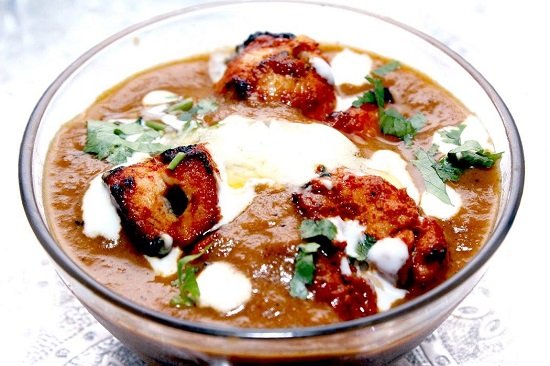
Photo Courtesy: Mystery Kitchen
Another player in the late night food delivery section, Mystery Kitchen is open from 5pm to 5am. The menu limits itself to North Indian and Chinese fare with emphasis on rolls and tandoori snacks in particular. The reviews for the quality and service have been mixed – ‘good but not great’. The Dal Makhani and Butter Chicken remain popular here too. A meal for two will cost around Rs 650. Look out for special discounts when you order for them on Zomato.
Contact: 9779844865
'Echoes from the Valley: Stories by Assamese Women Writers' has been translated and compiled by city-based journalist Parbina Rashid
It’s been a busy month for lovers of literature with back-to-back book launches being held in the city. Friday evening saw Parbina Rashid, a senior journalist in the city, formally launch her latest book, ‘Echoes from the Valley: Stories by Assamese Women Writers’ at The Browser in Sector 8.

PHOTOS BY: VIKRAM JOY
Translated and compiled by Rashid, the anthology, as she informs, reflects upon the socio-cultural scenario of Assam through 11 stories by 11 Assamese writers. “The stories span seven decades and come from three generations of authors,” remarked Parbina at launch.
The book was formally unveiled by well-known thespian, Padma Shri Neelam Man Singh Chowdhry along with former bureaucrat Robin Gupta at a well-attended ‘conversations with the author’ event.
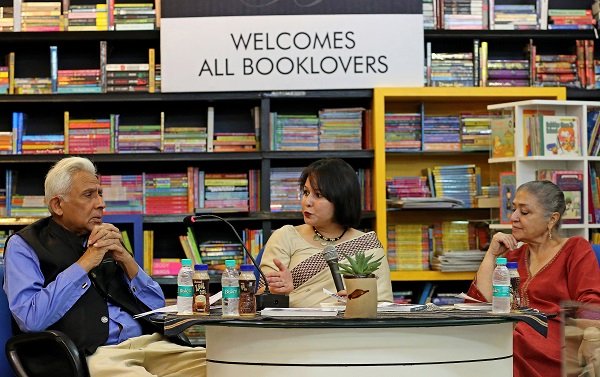
Parbina, who is an Assamese herself, shifted to Chandigarh many years ago and is married into a PunjabiSikh family. Gupta, the moderator for the evening, quizzed Parbina whether she chose to write this book as she was feeling homesick? “It was indeed an endeavour to connect to my roots. While I studied Assamese till Class XII, I lost touch but began reading again some years back. This simple step opened a treasure trove of Assamese literature and I wanted to share their stories with a larger audience and that’s how this book came about,” she said.
Keeping the central theme as ‘woman and her struggles’, the 11 stories look at how women have developed their consciousness about themselves as individuals. “I read hundreds of stories to choose these 11. I was looking for a common thread that could string it together and I found that with these stories,” said Parbina who has selected the stories and clubbed them under three subheads – ‘Mute Yesterday’, ‘Transitional Today’ and ‘Abstract Tomorrow’.

The writers’ list boasts of some of the most powerful and finest writers of Assam – Sneha Devi, Indira Goswami, Nirupama Borgohain, Rita Chowdhury, Anuradha Sharma Pujari, Manikuntala Bhattacharya, Moushumi Kandali, Gitali Borah, to list a few.
“Much about the Northeast is unknown in the rest of India. I wanted to share a slice of the rich volume of work especially by women writers in Assam. These short stories will give readers an insight into Assamese life and the women in particular,” said Parbina.
Commenting on the book, Neelam Man Singh Chowdhry remarked that she was impressed with how the essence of the story and the ‘smell’ and ‘syntax’ of Assam had not been lost in translation. “I really liked how Parbina has woven them together and these stories talk of spaces that belong to women and are well layered and nuanced,” said Chowdhry.
The book published by Media House is priced at Rs 250.
Senior representatives from nodal agencies of Punjab, Haryana, Himachal Pradesh, Jammu & Kashmir and Uttarakhand looking after wetlands were in attendance to present their case before senior officials from MoEF&CC, including Advisor to the Ministry Mr Brijesh Sikka and its Director Dr A. Duraisamy. The expected presentations from Chandigarh and Delhi did not come about despite it being a prestigious platform. The inexplicable absence of Chandigarh was all the more glaring since the workshop was happening in the city.

Image Courtesy: Google
Himachal Pradesh Council for Science and Technology presented innovative ways it had employed to conserve the three wetlands in the state identified as of “international importance” under the Ramsar Convention – Pong Dam Lake, Chandratal and Renuka – and national wetlands Rewalsar and Khajiar lakes.
Three different representatives from Punjab showcased the conservation work being done at the Harike, Ranjit Sagar and Keshopur (Gurdaspur) wetlands which had resulted in migratory and other birds flocking to these sites.
A senior officer from Haryana talked about the famous wetlands of the state like Sultanpur and Bhindawas, which were also major tourist attractions. The presentations by Jammu and Kashmir and Uttarakhand were pretty much skeletal.
Mr Brijesh Sikka told lifeinchandigarh.com on the sidelines of the workshop that a lot of serious efforts were being made to bring conservation of wetlands on top of the agenda in the country. But since land and water were both in the state list the onus was more on the states to take initiatives. The central government will not be found wanting in providing all support to the states, including funding, he assured.
Ten states had already created independent Wetland management authorities while other states were continuing with nodal agencies appointed to oversee this work, he said.
Among others who graced the occasion were Mr. Arunjit Singh Miglani, Punjab Science, Technology and Environment Secretary, Dr. Jatinder Kaur Arora, Executive Director, PSCST, and Dr. Ritesh Kumar, Conservation Programme Manager, Wetlands International South Asia.
Importance of wetlands
Wetlands are land areas that are saturated with water, either permanently or seasonally, such that they take on the characteristics of a distinct ecosystem and play a number of roles in the environment, principally water purification, ground water recharge, habitat for wildlife, flood control, carbon sink, etc.
Three day festival to see the likes of acclaimed thespians Shekhar Sen, Himani Shivpuri, Liliput and Dharamvir Bharti on stage
Summer evenings can be lean and boring. To perk things up and also give residents a chance to view leading thespians on stage, the Chandigarh Theatre Festival is back with a new edition. Organised by Department of Cultural Affairs, Chandigarh Administration and Tagore Theatre Society, the three day festival begins from May 26 at the Tagore theatre.
Here is the schedule
May 26 – Tota Maina Ki Kahani
About the play – Gaurav (Gaurav Sharma) and Kajal (Kajal Vashista) fell in love at first sight and marry, but it didn't take much time to turn them into Tom – 'Tota' and Jerry – 'Maina'. Champak Chacha (Liliput) is their neighbour and a father figure to Kajal and Gaurav. He is sweet, jovial and full of life. At times, he is troublesome for Gaurav because he knows about their marital problems. The play also stars Himani Shivpuri.
May 27 – Anjam-e-Gulistan Kya Hoga?
About the play – This Hindi play presents the current corrupt system. It shows the pain of common man and how high command officers exploit his rights. Governing bodies like people's representatives, government officials and mediators and bureaucrats have been named or called as owls by the writer in this corrupt system. Stars a large cast including actor Dharmveer Bharti.
May 28 – Tulsi
About the play – Starring acclaimed theatre actor and director Shekhar Sen, 'Goswami Tulsidas' is a mono act musical play written, composed, acted and directed by Shekhar Sen. The play depicts the entire life sketch of the saint poet Goswami Tulsidas of the medieval period. The pious soul of Goswami Tulsidas comes on the earth for a day and he tells his own story. It's interesting to know how an orphan beggar boy becomes the greatest poet of India.
What: Chandigarh Theatre Festival 2017
When: May 26 to 28
Where: Tagore Theatre, Sector 18, Chandigarh
Time: 6.30 pm
Entry: Rs 200/300. Tickets are available on www.tagoretheatrechd.org
Acclaimed Bharatnatyam exponent Suchitra Mitra performed with her disciples at the 234th Baithak organised by Pracheen Kala Kendra
In continuation with the tradition of a monthly Baithak, Pracheen Kala Kendra organised its 234th Baithak on Thursday evening. Organised at Punjab Kala Bhawan, the Baithak saw Chandigarh’s acclaimed Bharatnatyam exponent Suchitra Mitra perform along with her disciples. The Dr M S Randhawa indoor auditorium reverberated with the melodious beats of ghungroos and compositions. The senior dancer mesmerized the audience with her skillful footwork and graceful abhinaya. The evening started with ‘Ganesh stuti’ by Suchitra and her disciples namely Asha, Saumya, Samera and Surbhi. The Baithak also saw solo performance by Asha and Suchitra with the latter captivating the audience with her expressions in items like Meera Bhajan.
Here are special moments from the performance:
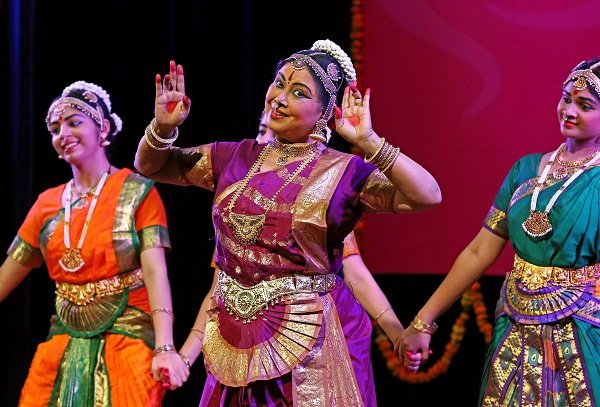
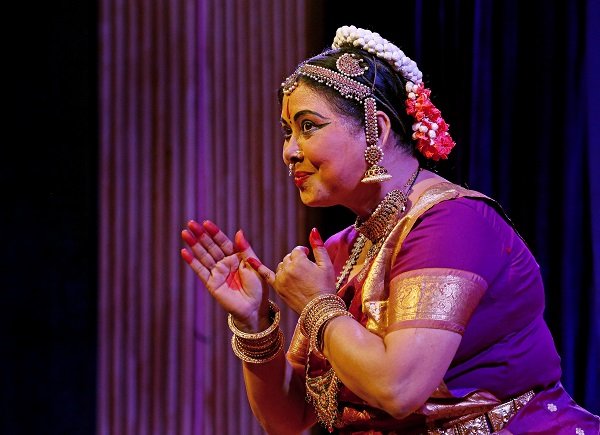

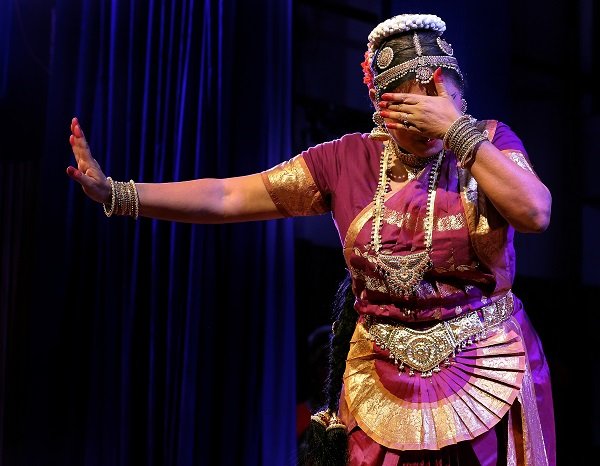
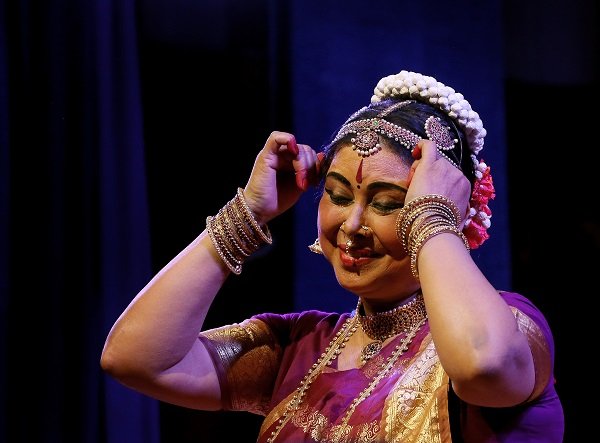

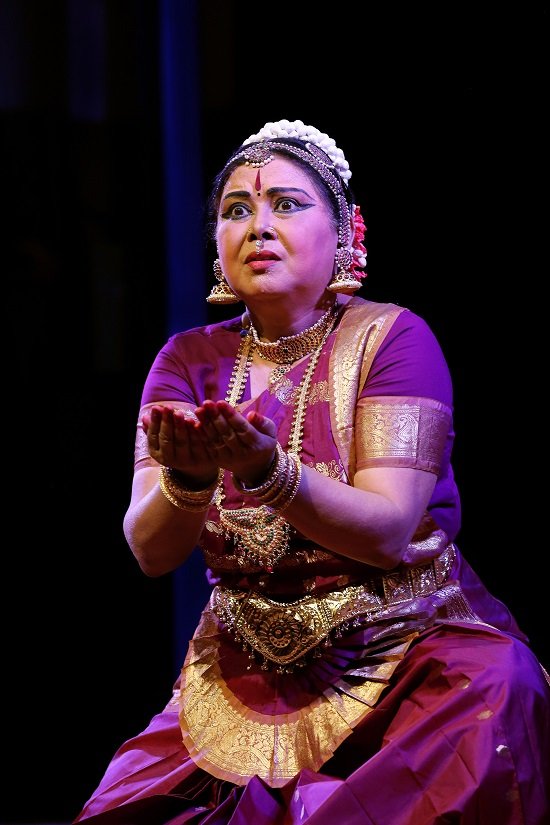
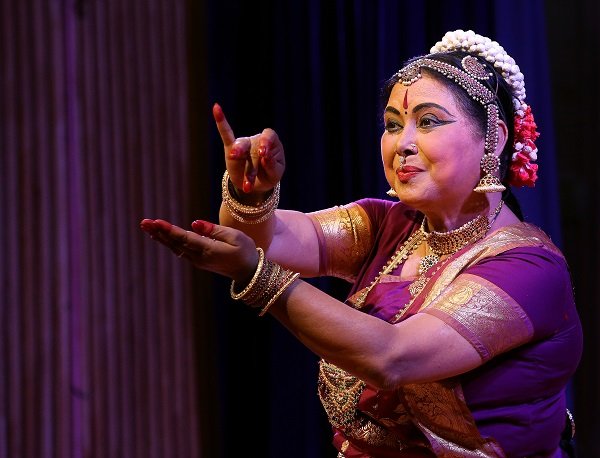
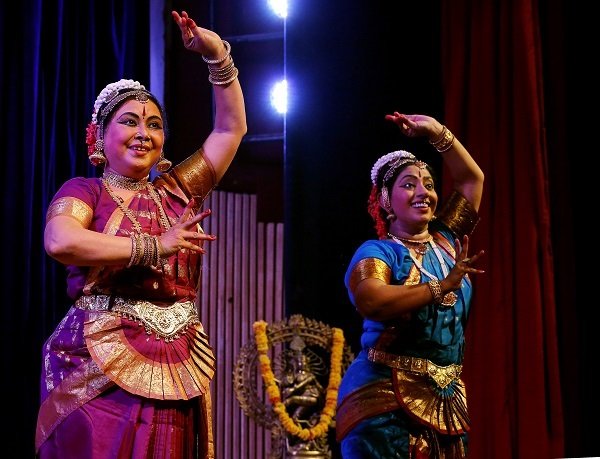
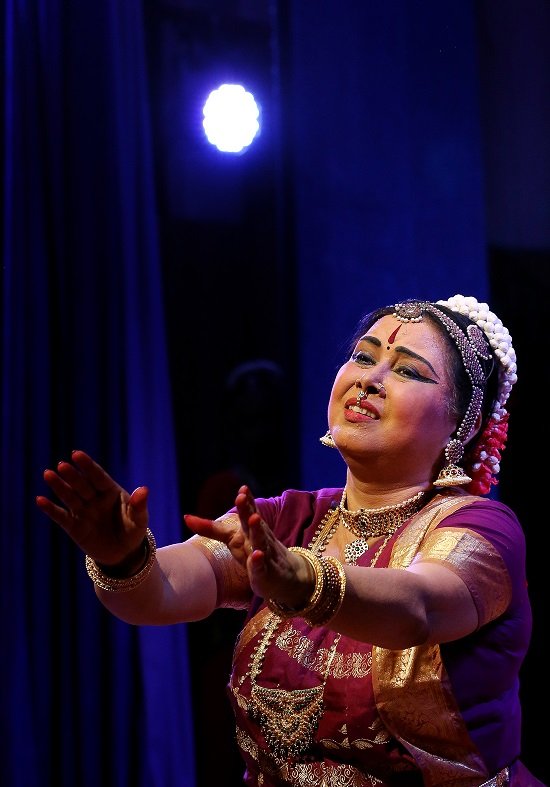
As part of its 49th anniversary celebrations, Government Museum and Art Gallery has rolled out a unique Museum Festival
It's the birthday month of the Government Museum and Art Gallery in Chandigarh. Did you know that the Museum building was designed by Le Corbusier himself and was formally inaugurated on May 6, 1968 under the initiative and active support of Late Dr M S Randhawa, renowned connoisseur and patron of art, and the then Chief Commissioner of Chandigarh.
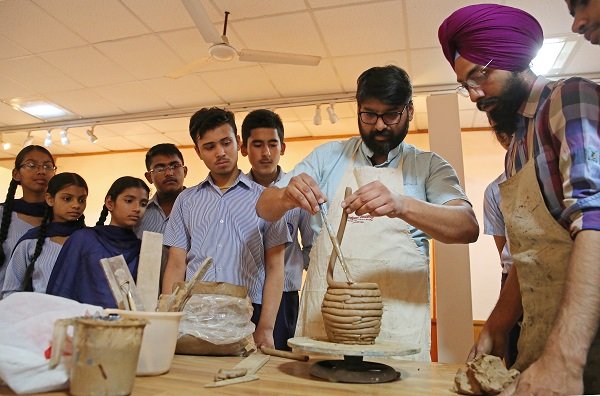
One of the premier institutions of India with a very rich collection of Gandharan sculptures, Pahari and Rajasthani miniature paintings, the Government Museum and Art Gallery in Chandigarh is celebrating its 49th anniversary with a unique ‘Museum Festival’.
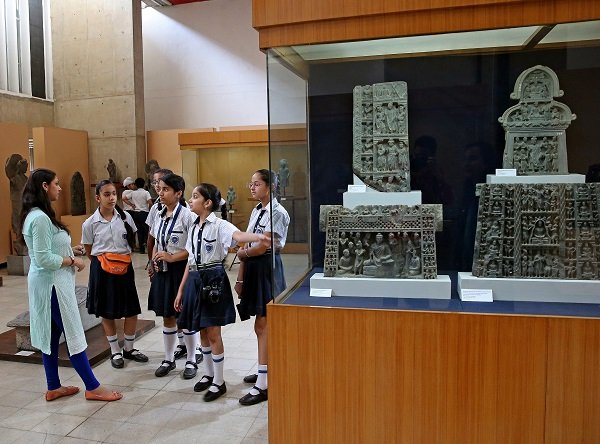
The festival, which rolled out on May 6 with a fun treasure hunt competition that saw a large number of families and individuals join in, has on offer a plethora of activities that children and adults can participate in. One of the highlights was the two-day Clay Sculpture workshop that saw school students (ages 13 upwards) gets hands-on experience with pottery and clay modelling. Steering this workshop was city-based sculptor Vishal Bhatnagar, also a resource person with the museum. “It’s a good initiative to get children acquainted with art subjects and also to make them aware about the museum and its rich collection,” remarked Bhatnagar as he guided the students in the Children’s Art Gallery section on Thursday morning.

The festival, which is on till May 18, also has an ongoing film-making contest with many school teams participating. “The theme of the contest is ‘The Way I See It’ where participants can choose one or more items from the museum collection and create a story around it. There are prizes up for grabs as well,” informed a museum official. The contest will culminate on May 18.
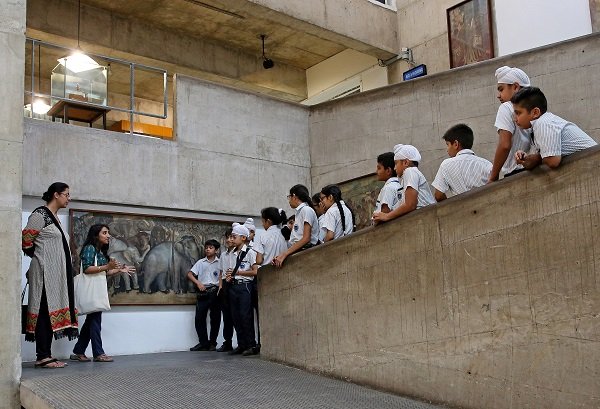
If you are interested in screen printing, then join in on May 12 to participate in a workshop to be steered by artist Mahesh Prajapati. The three-day workshop will take participants through preparation of a screen, drawing, stencils, image exposure, ink preparation and printing on paper. Timings for this are 11 am to 2 pm.
One can also participate in the ‘Snap-n-share’ contest, on till May 18. All you have to do is click a picture and upload it to Instagram or Facebook with the hastags #MuseumCHD and #MuseumDay. Prizes are on offer for this too.
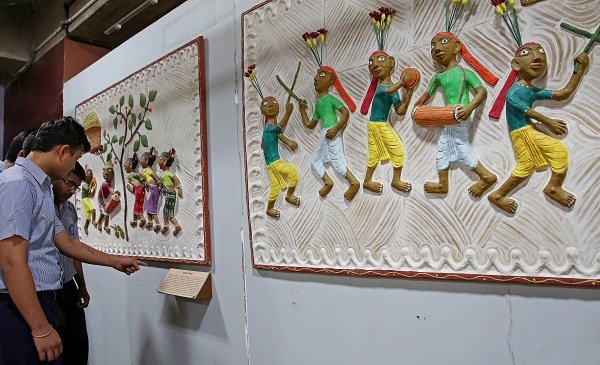
From May 16 to 18, there’s are Scavenger Trails and Gallery Activities that one can participate in. The contest is open for families too.
What: Museum Festival
When: On till May 18
Where: Government Museum and Art Gallery, Sector 10, Chandigarh
Entry: Free; Register between 10 am to 5 pm at the museum. Or call at 9876209496 or 8146080727
Panjab University Chandigarh, which has produced Nobel laureates, President of India and Prime Ministers, has fallen on bad days and needs your moral and financial support.
I have millions on millions of children settled across the globe. In my hey days, hundreds of them distinguished themselves in various fields – politicians, judicial officers, administrators, businessmen, educators, professionals, scientists, artists, writers, poets, dramatists and the likes. But now, having crossed the age of 130 years, I have become frail and helpless, and need your support to sustain myself.


With millions of alumni within the country and abroad being pained at the “unimaginable” developments in their revered alma mater, raising a reasonable corpus for the reserve fund wouldn’t be too difficult. Just imagine, even if a lakh (0.1 million) from among the sea of alumni pledge a one-time donation of Rs 5,000 each, a fund of Rs 50 crore (500 million) can be raised.

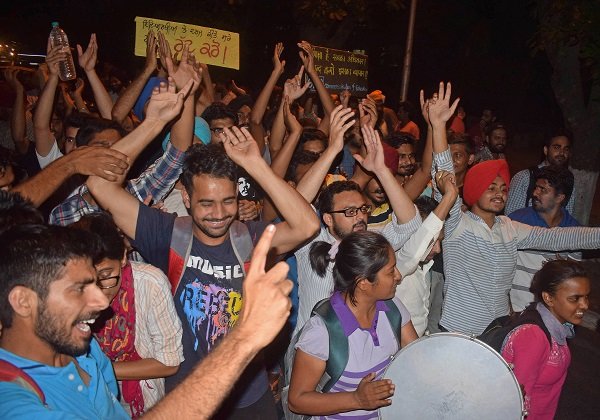
We, as alumni, can also take the initiative and offer our help and respective expertise to the university in this networking exercise.
Appealing to the Panjab University authorities to announce a roadmap for alumni donations without further ado….Do a quick diligence, and put out details of University bank accounts, including IFS code, etc for quick and safe transfer of donations to it with details of donors.
I’m pledging my Rs 5,000…how about you !
For any queries, pl contact Dean, Alumni Relations, PU email : darpu@pu.ac.in
As part of a collaborative effort, students of University Institute of Hotel and Tourism Management and Maharaja Agrasen University, Baddi are undergoing a special five-day workshop to understand different kinds of cuisines and evolving food trends
It might have been a lazy and hot summer Wednesday afternoon. But in the kitchens of the University Institute of Hotel and Tourism Management (UIHTM) at Panjab University, it was an action-packed day. It was the aroma of food being cooked that leads us to the class in action.

PHOTOS BY: VIKRAM JOY
Pots are bubbling away as we notice fresh lettuce in an ice bath, bell peppers being chopped with precision and a group of students huddled over the steely workstation, furiously taking down notes as their teacher – Chef Jaswinder Singh, also Associate Professor here – patiently demonstrates the perfect prawn cocktail recipe.

Joining the students of UIHTM are hotel management students from Maharaja Agrasen University (MAU), Baddi as part of a first of its kind collaborative workshop between the two institutes. “We rolled out yesterday and today the students are learning about soups, salads and appetisers,” remarked Vinay Chamoli, head of the department, Hotel Management and Catering Technology at MAU. Chamoli is accompanied by Chef Ketan Jhina, also from MAU. The two have paired up with UIHTM’s Anish Slath, also Associate Professor and Chef Jaswinder Singh for the five-day long workshop.

“Today, food trends are fast changing and so are global benchmarks. There’s a need to be precise with techniques and also keep up with the latest in different cuisines. Keeping this in mind we decided to conduct a workshop for the students, especially for those who are keen to pursue a career in the food production section,” explained Chamoli.

To make it an all-inclusive workshop, the teachers have put together a module that focuses on appetisers and main course. “We would be introducing and teaching the students speciality dishes from different global cuisines like Continental, Mediterranean and North Frontier region,” informed Chef Jhina.
Also a part of the workshop are lessons in contemporary and traditional cooking techniques. “These days, while there is a lot of emphasis on fusion or contemporary Indian fare, young chefs need to know classic techniques as well. For instance, in French cuisine, the technique is paramount and we would be teaching students those as well,” shared Slath.

There’s also an entire section dedicated to cooking in the tandoor. “Increasingly, diners are becoming conscious of the cooking methods. Deep frying is frowned upon. We are looking to make some experimental dishes using the tandoor and also teach methods like ‘sweating’, ‘pot roasting’ and ‘steaming’ to the students,” informs the faculty. While day one saw the students rustle up international soups like French Onion and Gazpacho, day two was dedicated to salads.

With the experts in action, we quizzed them about the emerging trends in the restaurant and food scene in the city particularly. To this Chamoli explains, “Not just diner’s palate but even the restaurant scene has evolved a lot in the last decade. There are more single cuisine restaurants now in the city, unlike multi-cuisine which was once the norm. Also there’s a lot of acceptance for familiar flavours in international fare. That explains the popularity of Meditarrean and Middle Eastern fare. While these cuisines will go strong this year too, healthier options on menus will emerge. We are even teaching students how to make dishes with the exact calorie count.”
Another emerging trend is that of contemporary Indian fare. “There’s more emphasis on flavours and new technique. And plating skills are very important too,” Chamoli added. While he doesn’t see quintessential Punjabi recipes like tandoori and butter chicken going anywhere, he does see newer ways to cook them. “Healthier recipes that don’t compromise on flavour will be key,” sums up the expert.